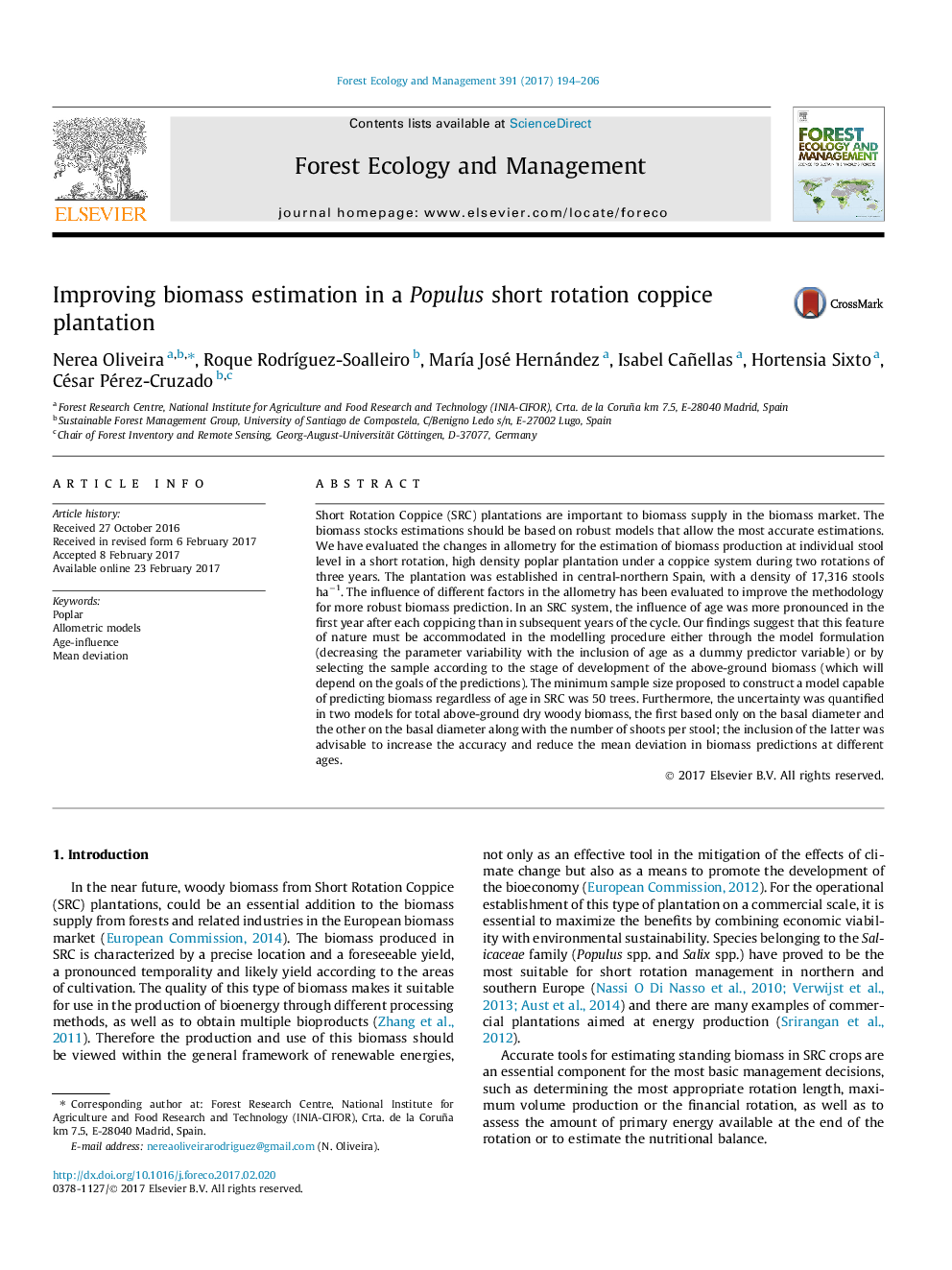| Article ID | Journal | Published Year | Pages | File Type |
|---|---|---|---|---|
| 6459422 | Forest Ecology and Management | 2017 | 13 Pages |
â¢In SRC there is high variability in parameter estimations between different ages.â¢Introducing age as a dummy variable provides more robust parameter estimations.â¢Age specific models are desirable for predictions at a specific stage of development.â¢The number of shoots increases the accuracy of the predictions among different age.â¢A minimum sample size of 50 is advisable in SRC biomass predictions by age for 'I-214'.
Short Rotation Coppice (SRC) plantations are important to biomass supply in the biomass market. The biomass stocks estimations should be based on robust models that allow the most accurate estimations. We have evaluated the changes in allometry for the estimation of biomass production at individual stool level in a short rotation, high density poplar plantation under a coppice system during two rotations of three years. The plantation was established in central-northern Spain, with a density of 17,316 stools haâ1. The influence of different factors in the allometry has been evaluated to improve the methodology for more robust biomass prediction. In an SRC system, the influence of age was more pronounced in the first year after each coppicing than in subsequent years of the cycle. Our findings suggest that this feature of nature must be accommodated in the modelling procedure either through the model formulation (decreasing the parameter variability with the inclusion of age as a dummy predictor variable) or by selecting the sample according to the stage of development of the above-ground biomass (which will depend on the goals of the predictions). The minimum sample size proposed to construct a model capable of predicting biomass regardless of age in SRC was 50 trees. Furthermore, the uncertainty was quantified in two models for total above-ground dry woody biomass, the first based only on the basal diameter and the other on the basal diameter along with the number of shoots per stool; the inclusion of the latter was advisable to increase the accuracy and reduce the mean deviation in biomass predictions at different ages.
